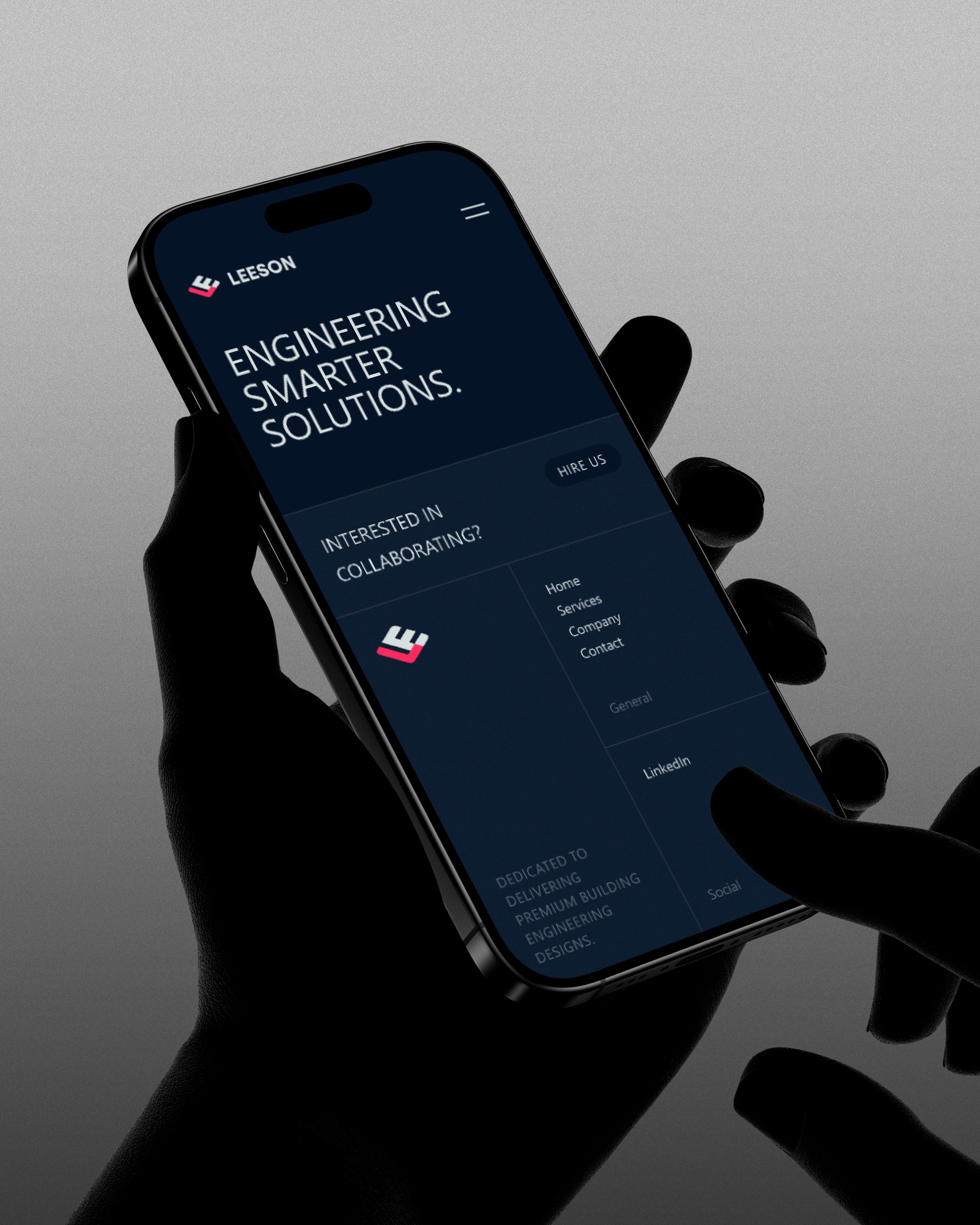How to Know If Your Website Needs a Redesign

Ever tried putting together IKEA furniture without the instructions? You start confident, then five screws in, you’re staring at a piece of wood wondering if it’s a chair or a very expensive abstract sculpture.
That’s kind of like your website sometimes. You think it’s fine… until visitors are bouncing, pages are slow, and your branding looks stuck in 2010.
If you’ve been asking yourself how to know if your website needs a redesign, you’re in the right place. We’re about to show the signs you need a website redesign, from sneaky UX issues to hidden technical glitches.
Grab a coffee, scroll down, and let’s figure out if your website needs a fresh start with a website redesign that actually works.
Your Branding Might Be Feeling Outdated
Your website might be quietly telling you that your brand is stuck in the past. Old fonts, washed-out photos, a logo that only lives in PDFs—these are classic signs of an outdated website design. But look for the rarer clues too: invisible hover states, broken micro-animations, or styles that only collapse on certain phones. Compare your site to modern web design trends like mobile-first layouts, flat panels, and tiny interactions that feel alive. Check your messaging—if it doesn’t match recent social posts, decks, or packaging, you risk confusing visitors. That’s a failure of a brand consistency website. Even seeing competitors look fresher is a nudge. This isn’t the end. There are smart, rare fixes ahead. Stick around—Hooman Studio spots these often, and small, focused wins can make a big difference.
Check Your UX and Navigation
Take a step back and look at how people actually move through your site. If they’re clicking around like it’s a maze, you might have website user experience issues. Menus that hide key pages, dead links, or confusing labels all quietly scream, “Help me!” Analytics can confirm it: high bounce rates, short sessions, and repeated clicks out of frustration are classic flags.
A quick site usability audit can reveal these pain points fast. Even small annoyances—like buried contact info or overly complex forms—turn visitors away. Sometimes it’s just a matter of a website navigation redesign: simplifying menus, adding clear calls to action, and making paths obvious. Look for patterns in feedback, too—questions like “Where do I find this?” are golden clues. Smooth, intuitive navigation keeps people exploring, builds trust, and makes your site feel alive rather than like a confusing labyrinth.

Losing Visitors, Leads, or Sales?
If visits, leads, or sales slip, don’t panic. Look for a sustained drop first. One bad week happens. Months of decline do not. Check if it’s website declining traffic across all channels or only one source. If organic search fell, peek at Google Search Console for indexing or penalties. If paid ads bring fewer conversions, check landing page fit.
Next, follow the funnel. Where do people leave? High exit rates on your cart or signup page point to friction. Common culprits are slow load times, confusing pricing, or long forms. Technical bugs also hide here. Broken scripts or tracking errors can make metrics lie.
Run quick tests. Try a site usability audit, heatmaps, and session recordings. Ask users one simple question with a tiny survey. A/B test headline and button copy. Many fixes are about clarity and speed. Improve loading and mobile flow to reduce bounce rate. Tighten the path to purchase. Fix one small thing and watch the ripple. There’s more to dig into.
Accessibility and Mobile Issues Need Attention
Accessibility and mobile problems are sneaky. Your site might look fine on a desktop but struggle on phones or tablets. That’s where mobile friendly website importance really kicks in. Tiny text, buttons too close together, horizontal scrolling—these are red flags. Check your pages on multiple devices. Don’t forget tablets; they get ignored too.
Also, think about users with disabilities. Can screen readers read your text? Do images have alt text? Are colors high-contrast enough? Missing these features points to a website accessibility redesign.

Run a few quick tests:
Google’s Mobile-Friendly Test, Lighthouse in Chrome, or a simple manual scroll on different screens. If pages break, it’s time to act. Using responsive web design 2025 principles—flexible layouts, scalable images, touch-friendly elements—keeps everyone happy. A redesign here isn’t scary. It’s about making your site usable, welcoming, and smooth for every visitor, anywhere.
Technical Issues Could Be Holding Your Site Back
Technical issues often hide in plain sight, quietly slowing your site and frustrating visitors. If your pages take forever to load, that’s slow website loading in action. Visitors don’t wait—they click away. Run speed tests with Google PageSpeed or GTmetrix to spot bottlenecks. Large images, bulky scripts, or uncompressed media are classic culprits.
Behind the scenes, outdated systems can be worse. Legacy website technology or an outdated CMS platform can make even small changes a headache. If updating a blog post or fixing a typo requires a developer, that’s a red flag. Broken features, dead links, or errors popping up regularly point to website technical debt piling up.
The fix is a smart site performance optimization plan and a modern rebuild.
Swap heavy code for lightweight frameworks, optimize media, and ensure your CMS lets you update content easily. Check your server logs, browser console errors, and maintenance workflow. If it feels slow, clunky, or frustrating to manage, a redesign isn’t just cosmetic—it’s a sanity saver. Small, targeted upgrades now prevent headaches later.
SEO Gaps Are Making You Hard to Find
If people can’t find your site, all that design work doesn’t matter. Website SEO problems often hide under the surface. Low organic traffic, no page-one rankings, or steep drops after Google updates are all warning signs. Check your analytics—if search referrals are tanking, that’s a clue.
A redesign is the perfect chance for an SEO-friendly website design. Fix broken sitemaps, add meta titles, improve headings, and ensure mobile performance. Consider an on-page SEO redesign: clean URLs, schema markup, and updated content that search engines actually love.
Run a quick audit with tools like Google Search Console or SEMrush to spot missing elements and errors.
If your brand or services are hard to find online, it’s not just frustrating—it’s costing you leads. Refreshing your site with SEO in mind makes it discoverable, useful, and ready to grow.
Security and Compliance Problems Are Costly Signs
Security problems are one of the sneakiest reasons to rethink your site. Small things can cause big damage. Website security vulnerabilities means holes attackers can use. It could be old plugins, missing updates, or weak passwords.
Check the basics first.
Open your site in a browser. Do you see a padlock? If not, your SSL website redesign might be overdue. SSL makes your address start with HTTPS and encrypts data so strangers can’t read it. Look for expired certificates in your hosting panel. Run a quick site scan or vulnerability checker. Check if your CMS or plugins need patches.
GDPR is a privacy law from Europe.
If you collect personal data and serve EU users, a GDPR compliance site means clear consent, a privacy notice, and proper data handling.
Fixes are usually practical. Renew SSL. Update software. Add simple firewalls and backups. Log suspicious activity. If breaches happened, get a cleanup and a plan. There’s more to check.
Your Growth or Rebrand Could Mean It’s Time to Redesign
Sometimes your sign of a redesign isn’t a trouble. It’s a breakthrough. If you rebranded, but your site still wears the old logo, visitors get mixed messages. That’s a cue for website redesign rebranding.
Watch for signs. New products that don’t fit existing pages. Sluggish checkout when traffic grows. Plans to sell in other countries but no language or currency support. These point to limits in your current site. Do a quick check: map new user journeys. Try a mock international flow. Add a test product and time how long it takes to launch it.
A fix can be small or big. Start by prioritizing needs. If growth is the goal, think scalable website design — flexible templates, modular content, and a CMS that won’t choke. If you’re going global, plan for an international website launch early: hreflang, localised content, and payment options. A redesign here is growth work. Tidy. Strategic. Exciting.





Inside Hooman Studio’s Website Redesign Workflow
Here’s how we do it at Hooman Studio when someone comes to us for website redesign services in Vancouver or anywhere (;
We keep it clear, structured, and always focused on results:
Discovery & Audit
We start by looking under the hood. That means checking analytics, reviewing competitors, and spotting the signs you need a website redesign. Think of it as a full health check.
Strategy & Planning
Together, we set goals. Better SEO? Faster checkout? Cleaner navigation? We map it all into a simple project plan.
Content & Branding
We make visuals that bring a refresh feeling. Copy that actually connects. Branding that feels current and consistent.
UX/UI Design
We design with people in mind. Easy paths, mobile-first, and accessibility baked in.
Development & Integration
Built on modern tech. Flexible CMS. Tools that scale with you.
Testing & QA
We test everything. Devices, browsers, speed, security. No surprises at launch.
Launch & Optimization
Smooth rollout, SEO redirects in place, then ongoing tweaks to keep performance sharp.
That’s the Hooman Studio website redesign workflow — simple, thoughtful, and built to last.
Should I Redesign My Website?
So, now you know the big signs for when to redesign your website. Outdated branding, tricky navigation, slow pages, weak SEO, or even growth your site can’t handle—all are little nudges to act.
A website redesign checklist helps spot them faster. At Hooman Studio, we’ve worked with clients all over the world, guiding them through the process with care. Our website redesign services are built for clarity, style, and results.
Ready to see how your website can be after getting a fresh start?
Then